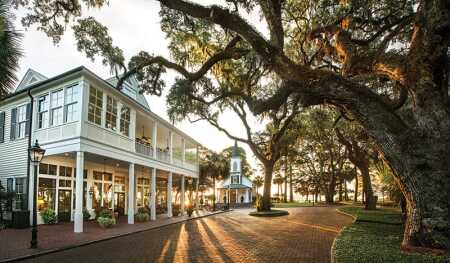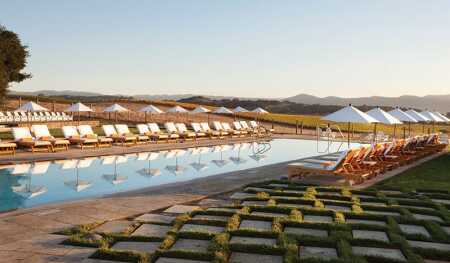Everybody is talking about authenticity. It is mentioned practically on a daily basis in the real estate world. But authenticity is more than a buzzword to boost returns. It is a must-have component of successful placemaking, whether you are creating resorts, one-off hotels, or full-scale communities.
Authentic is defined as “not false or copied; genuine; real; representing one’s true nature or beliefs; true to oneself or to the person identified.”—dictionary.com
How do you create authenticity in a project? What does it look like? How does it feel? That depends on whom you ask. Every generation views the world through a different lens—and that includes their interpretation of authenticity. Research shows that millennials value authenticity above practically all else. But they are not alone. Authenticity makes the list of top 10 values across all generations. And next up is generation Z, already flush with purchasing power and outnumbering millennials by about a million. As the first true digital natives, the members of gen Z have carefully tuned radars for the fake and disingenuous.
Antidote to Artificiality
What do we mean when we talk about authenticity? To me, it is something that feels like it belongs where it is. It instills that elusive “sense of place” we all crave. You cannot duplicate it somewhere else and expect it to work.
Though culture often comes into play, authenticity involves something more. Authenticity could be reflected in the materials—the way wood or stone is used—or in the design of a hotel lobby that makes it a hit with locals. Authenticity is evidenced by capturing the true personality and character of a place without looking like you are creating a 20th-century backlot design. If you think you can make a cheap imitation of something that has been around for hundreds of years, think again. You are in danger of making your consumers feel duped.
So how do you go from saying you are authentic to being authentic? Here are 15 takeaways I have learned over three decades in the branding and marketing business—and some of the places where they have proved effective with InterCom® clients.
1. Let Nature Lead
Sometimes, it is more about what you do not build than what you do build. Take Carneros Resort and Spa in Napa, California, where the swimming pool is seamlessly stitched into the Napa Valley scenery. While guests are lounging on the elevated deck, they can look out over the rolling hills and vineyards of the Carneros American Viticultural Area and appreciate that they are in Northern California wine country. There is something very compelling about that.
2. Create Shared Experiences
Often, people are key to authenticity—especially when they are insiders. Owners did not end up buying at 3 Creek Ranch in Jackson, Wyoming, just because of golfing in the Grand Tetons. They love the fishing concierge and resident naturalist, who serve as expert liaisons to three world-class, private trout streams. Whether it is learning the art of single hand-casting or getting the lowdown on the best spots to catch cutthroat trout, shared experiences create an indelible connection to the place.
3. Embrace Art
The value of art goes beyond what you hang on the walls. It helps tell a genuine story. Montage Laguna Beach in Laguna Beach, California, embraces the turn-of-the-century narrative of the land as an Impressionist paradise that lured prominent plein-air painters like William Wendt and Jean Mannheim. In this case, the resort also amassed a museum-quality collection of fine art, featuring historic masterworks created on its shores.
4. Inspire Total Immersion
Places that allow for total immersion take you out of your day-to-day mind-set and into a new world. Peninsula Papagayo’s iconic Costa Rican architect, Ronald Zürcher, is a master at immersive architecture. At Andaz Papagayo, in Guanacaste, Costa Rica, you enter the resort through his series of sculpted arches resembling cocoons, experiencing a profound sense of metamorphosis. It is an opportunity to find yourself transformed as you are enveloped by Costa Rica’s pure nature.
5. Keep It Local
What is the point of traveling if you spend your time in a hermetically sealed bubble? Punta Mita, a luxury resort destination on Mexico’s Pacific Coast, fosters authenticity by opening itself to the community. Instead of separating itself from the little beachfront fishing village next door, the resort turned it into an amenity. You can walk out the gates, watch the fishermen bring in the day’s catch, pull up a chair at a family-owned establishment, and mingle with the locals to take in the flavor of real Mexico.
6. Be True to Tradition
There is so much to learn from Palmetto Bluff, a residential resort community in Bluffton, South Carolina. One of my favorite things about Palmetto Bluff is the little village church, May River Chapel, which doubles as a charming wedding venue. In South Carolina, there seems to be a church on every corner since, historically, that is how settlement began. This Lowcountry chapel under ancient oaks, complete with wooden pews and arched windows, looks and feels as if it may have been there from the beginning.
7. Cultivate Co-Creation
There is something to be said about being in a place where you can be the master of your own experiences without having everything choreographed. At the Chapin Estate, a luxury resort destination and second-home community in New York’s Catskill Mountains, the developer could have amenitized the lakes with benches, bridges, and other built materials, but he did not. He left them just like he found them—pure, natural, and inspirational. The place becomes more real because you are co-creating it through your own practices.
8. Keep the Wild Things Wild
At Promontory Club, a private mountain community in Park City, Utah, the elk migration is as much a rite of the seasons as the changing leaves of the quaking Aspens. So, when developers built the golf course and buildings, they made sure they never crept in on nature’s plan. The golf course is hardly discernable from the backdrop of the mountains. The blending of manmade and nature-made allows the animals to be part of the community. It feels very authentic, as if everything has coexisted there forever.
9. Think Small
Bigger is not always better. In fact, a smaller scale adds a level of intimacy. Case in point: Potomac Shores, located near the town of Dumfries along the Potomac River in Prince William County, Virginia. The developer could have made the clubhouse 10 times larger, but instead, the developer applied the scale of a private Virginia estate that feels personal and welcoming in a great big landscape. Forgoing a monolithic ode to architecture, the developer let nature dominate and created a sense of visiting the home of old friends.
10. Speak through Storytellers
The right voice can lend authenticity to your project, as it does at the Kohanaiki Club on the Big Island of Hawaii, where the late Aunty Elizabeth Malu’ihi Lee, named a Living Treasure of Hawai’i, played a pivotal role in restoring and preserving the land’s rich heritage. As a cherished Hawaiian elder, she regularly came to the community to “talk story” about her life growing up on the Big Island, bringing the aloha spirit of Kohanaiki to life for attentive kids. Storytellers also become trusted brand ambassadors.
11. Perfect the Packaging
When packaging is done right, it can reinforce a sense of authenticity. Hualalai Resort on the island of Hawaii is one prime example. The early branding and marketing pieces were crafted to add a Big Island touch to every communication. Beyond showcasing John Kelly’s vintage Hawaiiana artwork, we used traditional Hawaiian breadfruit tapa cloth, silkscreened and hand-tied in raffia, to create the guestroom book and other resort materials. Despite technology—or maybe because of it—people still appreciate artistry that they can hold in their hands that is unique to the place.
12. Play with Your Food
The food and beverage business goes far beyond star chefs, creative menus, and local ingredients. Presentation can go a long way toward making food feel “of the place.” Kohanaiki (mentioned in item 10, above) positioned itself as the next generation of private club communities by bringing fun into the mix. One big hit was a beachside food truck outfitted as a classic beach woody on wheels complete with grass-shack top, where families line up for Hawaiian shave-ice and fish tacos.
13. Harness the Power of Myth
When places do not have real stories to tell, try tapping into the power of myth to create mystique. MYTH Bar at Hilton Orlando Bonnet Creek in Orlando, Florida, did not just get a rebrand and revamp. It told the symbolic tale of the fabulous Bonnet sisters, who were rumored to have been water goddesses (with the emphasis on “rumored”). Like the story, the decor harks back to a mythical time with vintage prints of bathing beauties gracing the ceiling. Did the sisters really live and swim here? Can they still be spotted in the moonlight? Does it matter? Disney has been creating magic from make-believe for decades, asking people to use their imaginations to make myths feel real. Hilton’s designers are using the same techniques.
14. Add Live Music to the Mix
Have you ever walked into a lounge or restaurant and heard the same playlist you hear back home? That is such a missed opportunity. Music is one of the greatest ways to bring people together, especially when the music is live and local. At Peninsula Papagayo, an exclusive residential resort community in Guanacaste, Costa Rica, Costa Rican musicians draw a mix of hotel guests, resort residents, and locals together—to dance, listen, and experience an authentic place.
15. Put Down Roots
There is no question that gardens and small farms create a meaningful connection to the land. Kukui‘ula on the Hawaiian island of Kaua‘i took inspiration from its location—neighboring the National Tropical Botanical Garden—through a series of lush gardens and an upcountry farm, where you can pick tropical fruits, help with the harvest, collect eggs from the hen house, and meet members of the farm team. The experience of growing and eating local food is not only authentic, but also healthy and sustainable.
Why Authenticity Matters
There is no debating the need for authenticity. Fortunately, inspiration is easy to find. It starts with unplugging from your screen. You need to get out there and educate your eyes, whether that involves going across an ocean or down the street. Look for ideas from different industries that can be integrated into real estate—from art to fashion to music festivals. Commit to a level of observation that soon becomes second nature.
At the end of the day, authenticity drives the value of place, as it did with Hualalai and Montage Laguna Beach. Both ultimately sold for staggering sums that shattered real estate sales records in their respective states. Authenticity is a win/win for everyone—the owners, the lenders, the guests—and the placemakers. UL
TONI ALEXANDER is president and creative director of InterCommunicationsInc., a global real estate branding, marketing, and consulting firm that has worked on all the projects noted in this article. Alexander is currently chair of the ULI Hotel Development Council, a ULI trustee, one of the first women governors of ULI, and a former jury member for the ULI Global Awards for Excellence.












